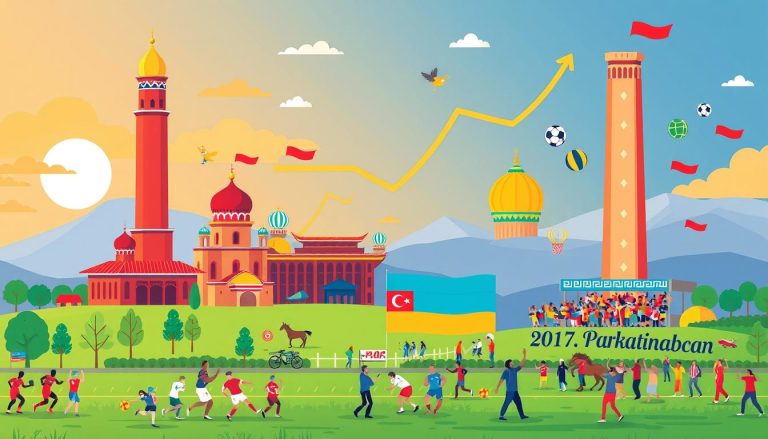Game Animation How To Plan For Vault Animations
Welcome to our guide on game animation vault animations and how to effectively plan for them. In this article, we will explore the importance of planning for vault animations in game development and provide actionable tips to help you elevate your gaming project to the next level.
As game developers, we understand the significance of captivating animations in creating immersive gaming experiences. Vault animations, in particular, play a crucial role in enhancing gameplay mechanics and adding a layer of realism to the virtual world.
Planning is a fundamental step in ensuring the success of any animation project, and game animation vault animations are no exception. By carefully strategizing your approach, you can harness the full potential of vault animations and deliver an outstanding gaming experience.
In the upcoming sections, we will delve deeper into the concept of vault animations, their role in game development, and the key considerations involved in planning for such animations. We will also explore the implementation process and provide practical guidance on refining and optimizing vault animations for optimal performance and player engagement.
Whether you are an experienced game developer or new to the world of animation, this guide will equip you with the knowledge and insights needed to plan and implement game animation vault animations effectively.
So, let’s dive in and discover how you can harness the power of vault animations to take your gaming project to new heights!
Understanding Game Animation Vault Animations
When it comes to game development, animation plays a crucial role in bringing virtual worlds and characters to life. One particular animation technique that holds immense value is Game Animation Vault Animations. So, what exactly does this term entail? Let’s delve deeper into the concept and explore its significance in the gaming industry.
In simple terms, Game Animation Vault Animations refer to pre-created, reusable animations that are stored in a central repository known as the “vault.” These animations can be applied to various characters or objects within a game, saving developers time and effort in creating unique animations from scratch. By understanding the power of this technique, game developers can elevate their projects to new heights.
So, why are Game Animation Vault Animations so crucial in game development? The answer lies in their ability to streamline the animation process while maintaining consistency and high-quality visuals. By accessing a library of pre-designed animations, developers can focus their creative energy on other aspects of the game, such as storytelling, game mechanics, and level design.
Furthermore, implementing Game Animation Vault Animations enhances the overall gaming experience for players. Consistent and fluid animations create a seamless gameplay flow, making characters and objects feel more lifelike and immersive. Whether it’s a character performing a complex combat move or an environmental object reacting to the player’s actions, well-executed vault animations add depth and realism to the game world.
To illustrate the impact of Game Animation Vault Animations, let’s take a look at some popular games that have successfully incorporated this technique. One notable example is the critically acclaimed action-adventure game “Assassin’s Creed Valhalla” by Ubisoft. The game features an extensive library of vault animations for the game’s protagonist, Eivor, allowing for smooth and dynamic movement across various terrains and combat scenarios.
“Game Animation Vault Animations play a significant role in creating a believable and immersive world in Assassin’s Creed Valhalla. By utilizing pre-designed animations, we are able to focus on perfecting the gameplay experience and delivering stunning visuals.”
Another game that showcases the power of vault animations is the fantasy role-playing game “The Witcher 3: Wild Hunt” developed by CD Projekt Red. The game’s protagonist, Geralt of Rivia, seamlessly transitions between different combat moves and interactions with non-playable characters, thanks to the implementation of Game Animation Vault Animations.
In conclusion, understanding Game Animation Vault Animations is essential for game developers who strive to create captivating and immersive gaming experiences. By utilizing pre-created animations stored in a central repository, developers can streamline the animation process, enhance the gameplay flow, and bring virtual worlds and characters to life in a more efficient and visually stunning manner.

Planning for Game Animation Vault Animations
Planning is a crucial phase when it comes to creating captivating game animation vault animations. By setting clear goals and defining the desired animation styles and movements, game developers can ensure a smooth and successful implementation. Here are key considerations and steps to help you effectively plan for game animation vault animations:
- Set Clear Goals: Before diving into the animation process, it’s essential to establish clear goals for your game animation vault. Determine the emotions and experiences you want to evoke in players and align them with your game’s overall theme and narrative. This will guide your animation decisions throughout the planning and implementation stages.
- Create a Storyboard: Storyboarding allows you to visualize the flow and timing of your game animation vault. It helps map out key scenes, transitions, and interactions, ensuring a coherent and engaging animation sequence. Consider the pacing, camera angles, and user interactions when crafting your storyboard to bring your game to life.
- Define Animation Styles and Movements: Every game has its unique art style and character movements. When planning for your animation vault, consider the visual aesthetics and mechanics of your game. Determine the animation styles, such as realistic, cartoony, or stylized, that align with your game’s overall look and feel. Pay attention to character movements and ensure they are smooth and responsive, enhancing the player’s immersion.
- Collaborate with Animators and Developers: Game animation vault planning is a collaborative effort. Involve your animators and developers early in the planning process to ensure alignment between the artistic vision and technical feasibility. Regular communication and feedback loops will help refine your animation plans and ensure a seamless integration into your game.
Remember, planning is the foundation for creating exceptional game animation vault animations. Taking the time to set clear goals, create a storyboard, and define animation styles and movements will contribute to the overall success of your game. Now let’s move on to the implementation stage, where we’ll explore the technical aspects of integrating game animation vault animations.
Expert Tip:
“During the planning phase, incorporate user testing to gather real-time feedback and iterate on your animation ideas. This will help you identify any potential issues and make necessary adjustments to create a truly immersive gaming experience.”

Implementing Game Animation Vault Animations
After carefully planning for Game Animation Vault Animations, the next crucial step is implementing them into your game. This stage focuses on the technical aspects of integrating these captivating animations seamlessly, ensuring a truly immersive gaming experience.
The key to successful implementation lies in utilizing animation software and employing efficient coding techniques. Animation software offers a range of tools and features to bring your vault animations to life, allowing for smooth transitions and realistic movements. Take advantage of these resources to unlock the full potential of your game’s visuals.
When implementing Vault Animations, it’s important to consider the optimization of your animations for performance and player engagement. Optimizing your animations will ensure that they run smoothly on various platforms and devices, providing a seamless experience for your players. Fine-tuning the timing and reducing file sizes can significantly enhance the overall performance of your game, resulting in satisfied players and positive reviews.
Lastly, thorough testing and refining are crucial in perfecting your animations. Solicit feedback from beta testers or a focus group to identify any areas that may need improvement. By addressing these issues and making necessary adjustments, you can create animations that captivate your audience and elevate your game to new heights of success.







